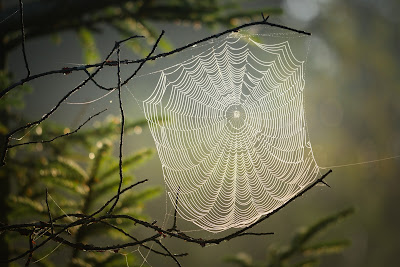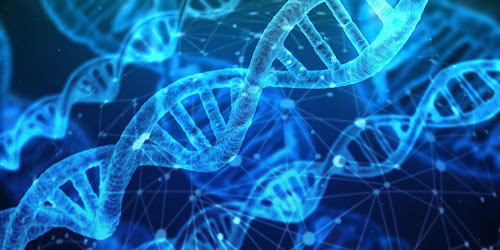A CASE STUDY ON BIOSYNTHETIC SPIDER SILK
Artificial Biosynthetic spider silk – from bacteria to plants to goats
Before we start discussing about the production of biosynthetic spider silk, we shall introduce to you-
Randy Lewis, a professor formerly at the University of Wyoming and now at Utah State University, who was also able to successfully breed spider goats in order to create artificial silk. As of 2012, there are about 30 spider goats at a university-run farm and he has been under this research since 90’s.
However, there were scientists and researchers who had worked on this before him.

Image by| fietzfotos
On 29th of July, 2020, while working in the kitchen I suddenly found an old newspaper of August 23 2018 ‘The Assam Tribune’, where I found an interesting article on a bacteria which can produce synthetic spider silk.
I searched the research article in the international journal ‘Biomacromolecules’, and found many articles related to this.
On 30th of July, 2020, after reading over 20 reports and articles on 10
different sites, I finally could summarize my findings and study on this topic.
What is Biosynthetic spider silk?
It is an artificial spider silk which has been engineered by the scientists by replicating to mimic the spider silk's strength, stretchiness and energy-absorbing capacity which is stronger than steel, tougher than Kevlar, completely biodegradable, affordable, and biocompatible.
What were the challenges found by the scientists?
Unfortunately, due to spiders' territorial and cannibalistic nature, it was not possible to mass produce proteins. Scientists tried spider farms but due to their nature, they started killing each other. Thus, it needed a different approach.
 |
| Image by| Arek Socha |
Also, creating a bigger protein was the biggest challenge. The article in ‘Biomacromolecules’ revealed that – Tensile strength and toughness of spider silk remains positively correlated with its molecular weight -- the bigger the molecule, the stronger the silk.
How is Biosteel related?
Biosteel was a trademark name for a high-strength
fiber-based material made of the recombinant spider silk -like protein
extracted from the milk of transgenic goats, made by Montreal-based
Company Nexia Biotechnologies, and later by the Randy Lewis lab.
What resulted from the Zhang’s lab?
Christopher Bowen, a PhD student in Zhang's lab, said that they modeled a DNA sequence after the sequence in spiders that is responsible for creating the silk protein.
According to his theory, the more repetitions of the sequence, the bigger the resulting protein. But after the DNA sequence reaches a certain size, the bacteria can't handle it and they chop the sequence into smaller pieces.
 |
| Image by| Gerd Altmann |
So, Bowen and co-authors added a short genetic sequence to the silk DNA that promotes a chemical reaction between the resulting proteins, fusing them together to form an even bigger protein that has ever been produced and purified before.
How did Dr. Randy Lewis approach his research with spider goats?
Researchers from the University of Wyoming have experimented to incorporate spiders' silk-spinning genes into goats, allowing the researchers to extract the silk protein from the goats’ milk for a variety of applications.
Randy Lewis has been studying the properties of spider silk and
developing methods for producing it synthetically for more than thirty years.
Lewis used different ways to produce these silks-starting with bacteria as they were easy and fast. His team also tried to see if they could grow it in plants like alfala or insert the spider-silk-laden bacteria into goats. But the most efficient method they discovered was silkworms and this is still being used.
In the 90s, his research team cloned the first spider silk gene and identified and sequenced the proteins of six different spider silks. They decided to put the spiders’ dragline silk gene into goats in such a way that the goats would only make the protein in their milk.
For instance, out of seven goat kids born in February 2010, three have tested positive for having the silk protein gene.
 |
| Image by| Fernando Gutierrez |
What happened to those spider goats?
Nexia was the only company that has successfully produced fibers from spider silk expressed in goat's milk. The company was founded in 1993 by Dr. Jeffrey Turner and Paul Ballard and was sold in 2005 to Pharmathene.
Two transgenic goats (Spice and Sugar)were sold to the Canada Agriculture Museum after Nexia Biotechnologies went bankrupt.The museum said it purchased them in late 2009 and early 2010 to put them on display, but only for education purposes and not to produce the spider silk.
However, Lewis’ lab looks after over twenty goats capable of producing silky milk.



This piece is very informative
ReplyDeleteInformative
ReplyDeleteEducative and insightful post. Very interesting
ReplyDeleteVery informative. Expect to be fruitful in this genetic engineering experiment. Thks lot U too.
ReplyDeleteThank you all for commenting.
ReplyDeleteGood Work, keep it up..............https://sheetaluwach.com/
ReplyDeleteInformative article
ReplyDeleteI see that you performed a lot of research on this topic and have consolidated it here to form a very informative piece.
ReplyDeleteLove this information. I remember reading years ago about them thinking about using it for bullet proof vests.
ReplyDelete